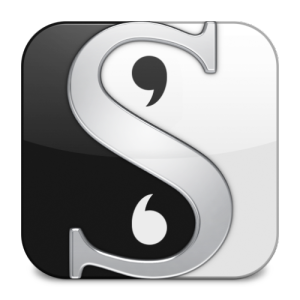 In February of this year I was introduced to a software writing program called Scrivener. A fellow writer, who is as Attention Deficit as I am, said the program has been instrumental in helping him keep his novel organized. I was already 2/3 of the way through my own novel The Witches of Dark Root, but the plot was getting deeper and more complex than I had originally anticipated. My friend assured me that Scrivener would keep me on track, especially if I planned to write sequels (which I did), so I gave it a try. My only regret now is that I I hadn’t written my entire book using this program.
In February of this year I was introduced to a software writing program called Scrivener. A fellow writer, who is as Attention Deficit as I am, said the program has been instrumental in helping him keep his novel organized. I was already 2/3 of the way through my own novel The Witches of Dark Root, but the plot was getting deeper and more complex than I had originally anticipated. My friend assured me that Scrivener would keep me on track, especially if I planned to write sequels (which I did), so I gave it a try. My only regret now is that I I hadn’t written my entire book using this program.
Here are the top ten reasons I love Scrivener.
- It’s great for a new project or a work in process. As I said, I was already 2/3 of the way through my novel The Witches of Dark Root and I was a little nervous about importing my ‘baby’ into this new writing program. But it was a fairly simple process. I just converted my manuscript into an RTF format, hit the import button and voila, my manuscript was now accessible in Scrivener. If you don’t have a WIP you can begin your new project right inside the program without having to import anything.
- It’s easy to write in. I was hesitant to start typing directly into the program and at first I would type in Word, then import, rinse and repeat. That got old fast. Once I bit the bullet I realized I shouldn’t have been nervous. Scrivener’s word processing program is quick and smooth and has many of the same features that Microsoft Word uses including word count, document formatting, and spell and grammar check.
- It saves your work automatically. Scrivener saves my work every few seconds. I no longer panic when my computer suddenly decides to install updates or the battery runs out. I know it’s safe, waiting for me.
- It is great for organizing. In Scrivener you have the ability to divide your work up into files, chapters, and scenes. They can be viewed on a side bar and you can click on their link for instant access. You can also move them around, dragging and dropping at will. In addition, Scrivener has a place to store information about characters, places, and even research (where you add links directly to websites). No more sorting through notes and files; with a click of the mouse I can access it all. Finally, Scrivener has a corkboard feature which allows you to put information on index cards that can be moved around. This is great for plotting and storing tidbits of information I will need later. I no longer feel like I’m constantly ‘forgetting something’. With Scrivener it’s all there.
- It helps you stay on target. You can set a word target for an entire manuscript (say 80,000 words), or just for your current writing session. As you work Scrivener keeps track of your goal with a red-yellow-green color coded system and alerts you when you have completed it.
- It takes you to helpful sites. Stuck on the meaning of a word? Scrivener can take you directly to dictionary.com. Need another word for walk? It will take you to thesaurus.com. It can also take you to Wikipedia, a place to look up quotes, and other useful sites.
- Three words: random name generator. One of the neatest features I have seen is the random name generator. You just plug in your character’s age, sex, place of origin, and a few other bits of information and it will spew out a random first and last name for you. The results are interesting, insightful, and often hilarious.
- You can compare texts side by side. Scrivener has a split screen effect so you can pull up two scenes and compare them. Really helpful for ensuring that details add up.
- There’s a labeling system. The program offers some basic labels such as ideas and notes and you can add in your own. I created two called flashback scenes and needs work.
- It has a compile feature. I’m still editing my last draft of The Witches of Dark Root and haven’t tried this out, but when I am finished with my manuscript I can hit one button and all my chapters should merge seamlessly. If I like, I can then format my work into an e-book or novel. I’ve heard some people say that this makes putting your e-book out there really, really easy.
I could keep singing the praises of Scrivener but I have to stop somewhere. As a side note it’s free to try at http://www.literatureandlatte.com and when I purchased it a few months ago it was only 45 dollars, a price I’d happily play again. There’s a bit of a learning curve, so I suggest watching some of the video tutorials on the site, or go to YouTube for some other fun ideas. You can probably pick up all you need to get started after just a few minutes.
To conclude, Scrivener is a great tool for writers of fiction and non-fiction. I’m glad I found it and I wouldn’t dream of starting my next novel without it.
View April Aasheim’s profile page
